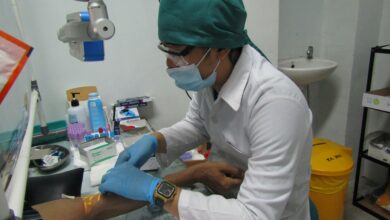Hair Transplant Density Explained – How Many Grafts Do You Really Need?
Discover the science behind natural-looking density, how surgeons calculate grafts, and what affects your final hair thickness.

- Introduction
When planning a hair transplant, one of the most common questions is:
“How many grafts do I really need for full coverage?”
Understanding hair density helps you set realistic expectations and ensures your surgeon designs a transplant that looks natural, balanced, and age-appropriate.
What Is Hair Transplant Density?
Hair density refers to the number of hair grafts (follicular units) placed per square centimeter (cm²) of scalp.
-
Normal natural density: 80–120 follicular units/cm²
-
Achievable transplant density: 40–60 grafts/cm² (depending on technique and donor quality)
Each graft contains 1–4 hairs, so even a 50 graft/cm² density can mimic natural fullness when placed strategically.
Factors That Affect Required Grafts
-
Degree of Baldness (Norwood Scale):
-
Stage II–III: 1,500–2,500 grafts
-
Stage IV: 3,000–4,000 grafts
-
Stage V–VI: 4,500–6,500 grafts
-
-
Hair Thickness & Texture:
Thicker, wavier hair gives better coverage than fine, straight hair. -
-
Donor Area Availability:
The stronger and denser your donor zone, the more grafts can be safely harvested. -
Technique Used:
-
FUE (Follicular Unit Extraction): Allows precise, natural graft distribution.
-
DHI (Direct Hair Implantation): Offers denser placement with faster recovery.
-
-
Hairline Design & Age:
Surgeons often create age-appropriate hairlines to maintain a natural look over time.
Graft Calculator Example
Area Coverage Needed (cm²) Average Density (Grafts/cm²) Estimated Grafts Hairline (frontal) 30 45 1,350 Mid-scalp 40 40 1,600 Crown 60 35 2,100 Total — — ≈ 5,000 grafts
Realistic Density vs. Over-Density
Many patients request ultra-dense packing, but surgeons avoid excessive grafts to protect scalp blood flow and ensure graft survival. A natural density transplant is typically 40–55 grafts/cm².
Scientific Insight
-
A 2021 study in Aesthetic Surgery Journal found that densities above 50 grafts/cm² showed no added cosmetic benefit compared to 45 grafts/cm², due to limited vascular supply.
-
Clinical Hair Restoration Journal (2022) reported that multi-session FUE produces 20% higher graft survival compared to single high-density sessions.
How to Achieve the Appearance of Density
✅ Opt for multi-angled implantation – mimics natural follicle direction.
✅ Use PRP or Exosome therapy post-transplant to improve graft survival.
✅ Choose experienced surgeons – placement artistry matters more than numbers.
✅ Proper aftercare – avoid scratching or trauma in the first 10 days.
Conclusion
Your ideal hair transplant density depends on baldness stage, donor quality, and aesthetic goals — not just graft numbers. Focus on strategic placement and experienced hands for the most natural, long-lasting results.
-





